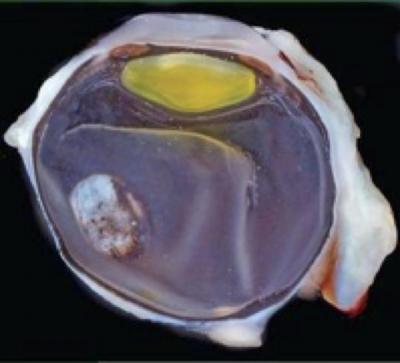
Cross-section of the eye of an infant rhesus monkey eye exposed to Zika virus in utero, showing an oval-shaped defect in the retina. Image credit: Glenn Yiu and Koen Van Rompay, UC Davis.
While the SARS-CoV-2 virus has dominated the news this past year, researchers continue to study the health effects of the Zika virus, which has been reported in 86 countries globally.
The Zika virus is primarily transmitted by the bite of an infected mosquito from the Aedes genus. However, it can also be passed through sexual contact, blood transfusions, organ transplants, and between mother and baby during pregnancy. The virus has been documented to cause a range of birth defects, including microcephaly and various neurological, musculoskeletal, and eye abnormalities.
A new study from Glenn Yiu, associate professor in the Department of Ophthalmology at University of California, Davis, and Koen Van Rompay, a core scientist at the California National Primate Research Center, found that Zika infection during the first trimester of pregnancy can impact fetal retinal development and cause congenital ocular anomalies. The virus does not appear to affect ocular growth postnatally, however.